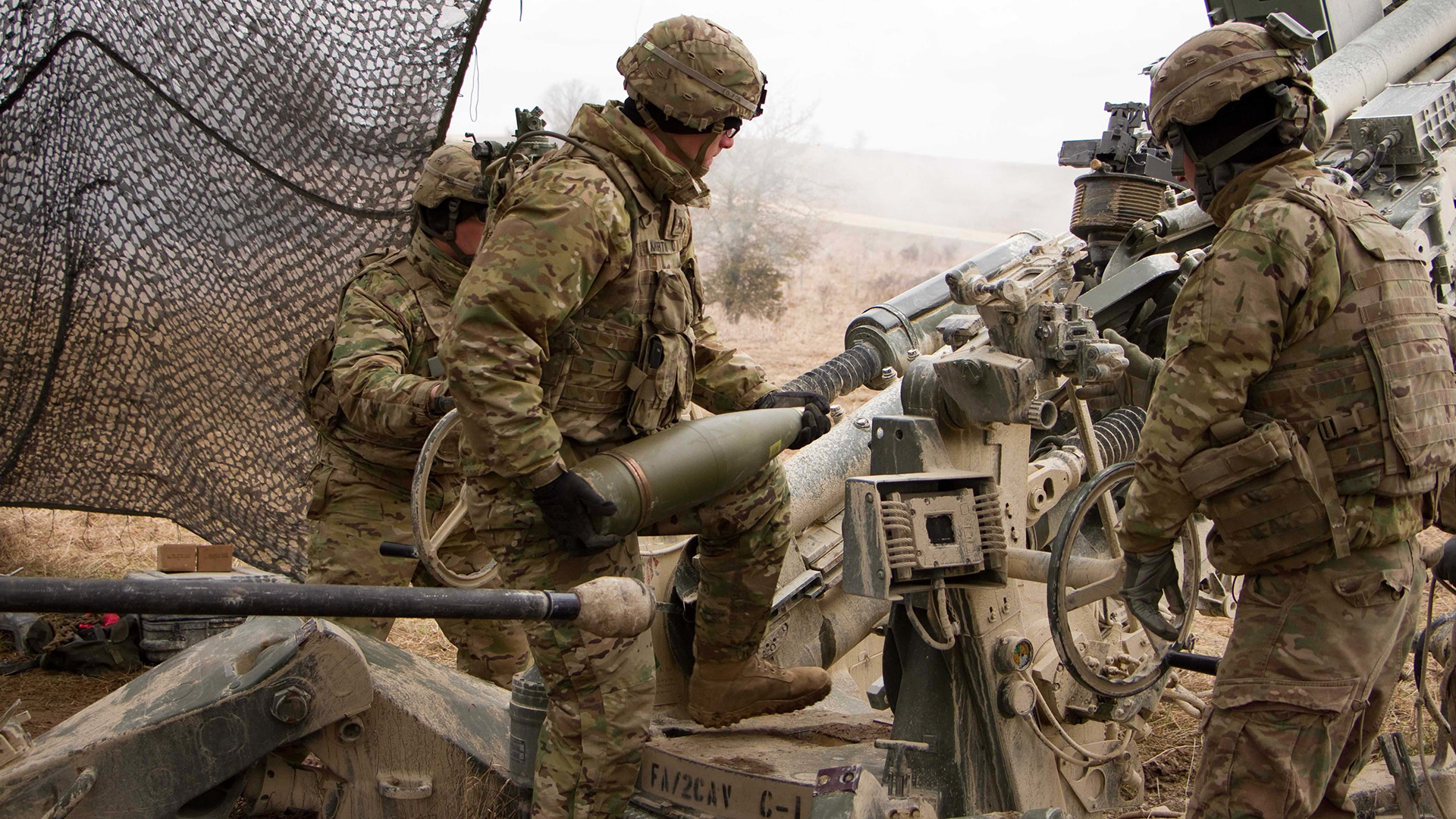

The U.S. military already is ramping up production of 155mm artillery shells, but now the Pentagon’s weapons acquisition chief is setting a higher goal for 2025. The military will make 100,000 155mm shells per month, or more than one million in total that year.
It’s also a huge jump from where the Pentagon’s production target is for 2024. Just last month Douglas Bush, the Army’s assistant secretary for acquisition, logistics and technology, said that the Army will be manufacturing between 80,000-85,000 155mm shells per month next year. Now Bill LaPlante, the Pentagon’s Undersecretary for Acquisition and Sustainment, expects an even higher amount in 2025.
“We’re going to be at 100,000 per month in 2025. We were at 14,000 per month six or eight months ago, we are now at 28,000 a month today,” LaPlante said on Friday.
Subscribe to Task & Purpose Today. Get the latest military news and culture in your inbox daily.
Artillery ammunition has been front and center at the Pentagon since Ukraine’s war with Russia began. The massive conventional war has shown just how quickly armies can burn through artillery ammunition, with both sides firing between 5,000-6,000 shells per day at certain points in the fighting. When the fighting turned into a war of attrition with dense trench warfare, artillery became even more important, particularly as armies besieged Ukrainian cities.
In fact, since February 2022, the United States has provided Ukraine with more than two million 155m shells for M1777 howitzers and other artillery pieces, according to the Pentagon. By fall of 2022, defense officials were concerned that the U.S. was facing a dwindling stockpile of its own; Bush has denied that the U.S. military has burned through its own supplies.
The ammunition shortage has hit both sides of the war in Ukraine. Most recently Russia has been looking to North Korea to help supply it with ammunition to maintain its fighting abilities. A recent summit between the country’s leaders could lead to North Korea providing Soviet-era artillery rounds to Russia, but Chairman of the Joint Chiefs of Staff Gen. Mark Milley said it is unlikely to make a “huge difference” in the conflict.
In an effort to make up for those lost stores, the U.S. military has ordered new production lines to turn out 155mm shells. Those are still being set up and once operational should result in the surge in manufacturing that the Pentagon expects.
The push for greater ammunition is being done not just to replenish and build up the American stockpile, but to have enough to continue sending munitions to Ukraine. Other parties, including the European Union, have pledged to increase their production as well, with a goal of one million rounds.
The latest on Task & Purpose
- Boot camp obstacle course was no problem for 4-foot-7-inch Marine
- Army’s pre-boot boot camp to become permanent
- Navy commander fired for “loss of confidence”
- Marine vet charged with false Purple Heart claim, benefits fraud
- Three Navy SEAL commanders face charges in Hell Week death
